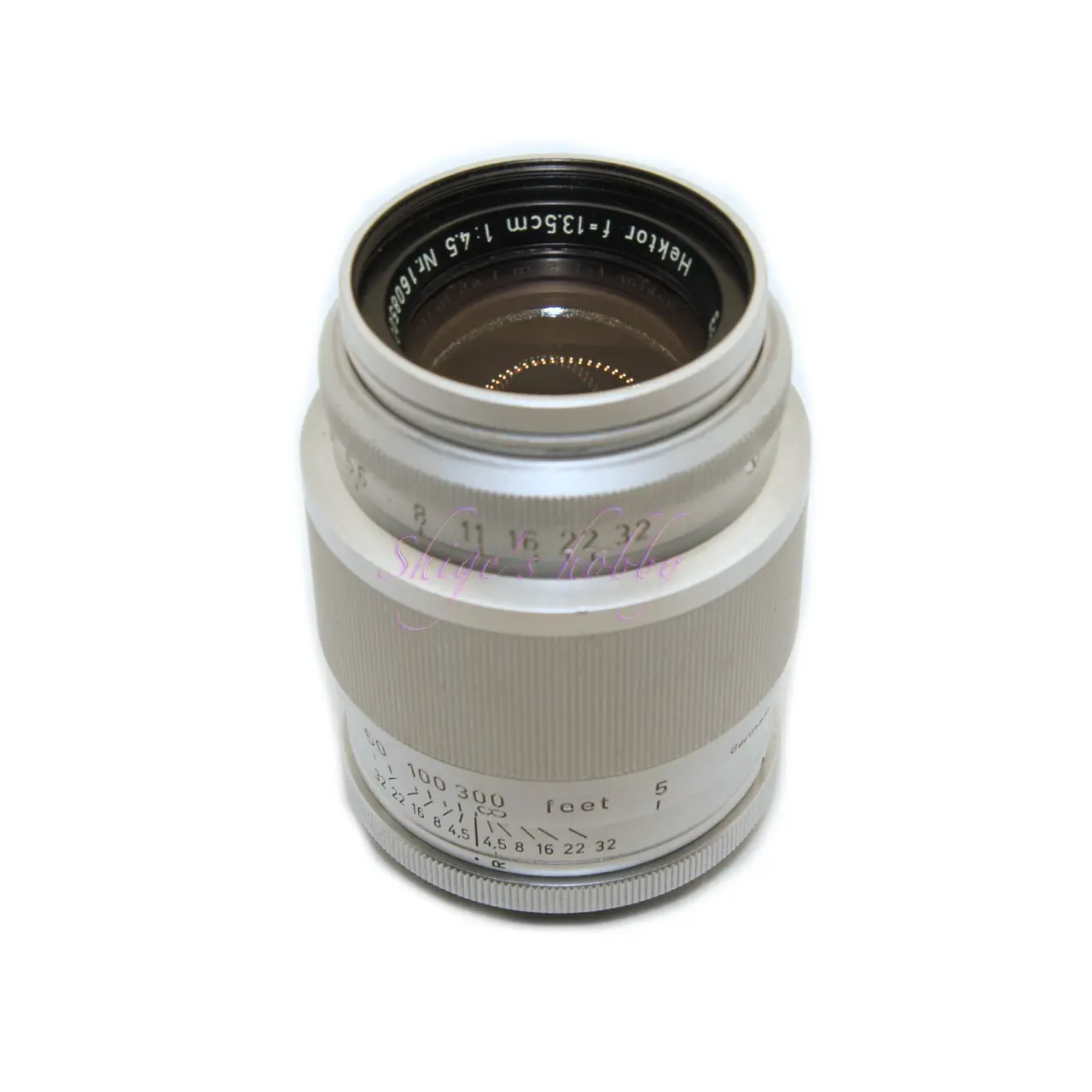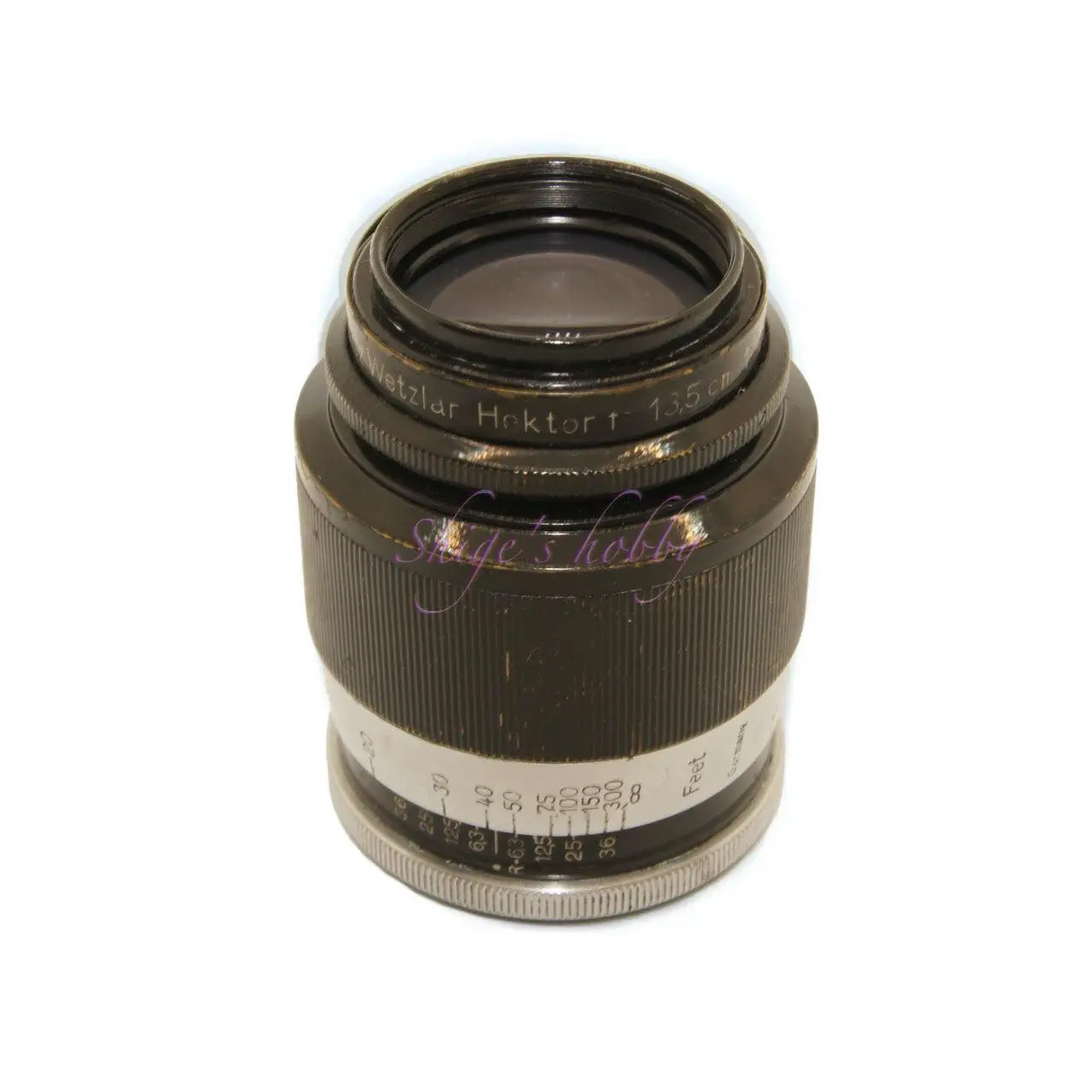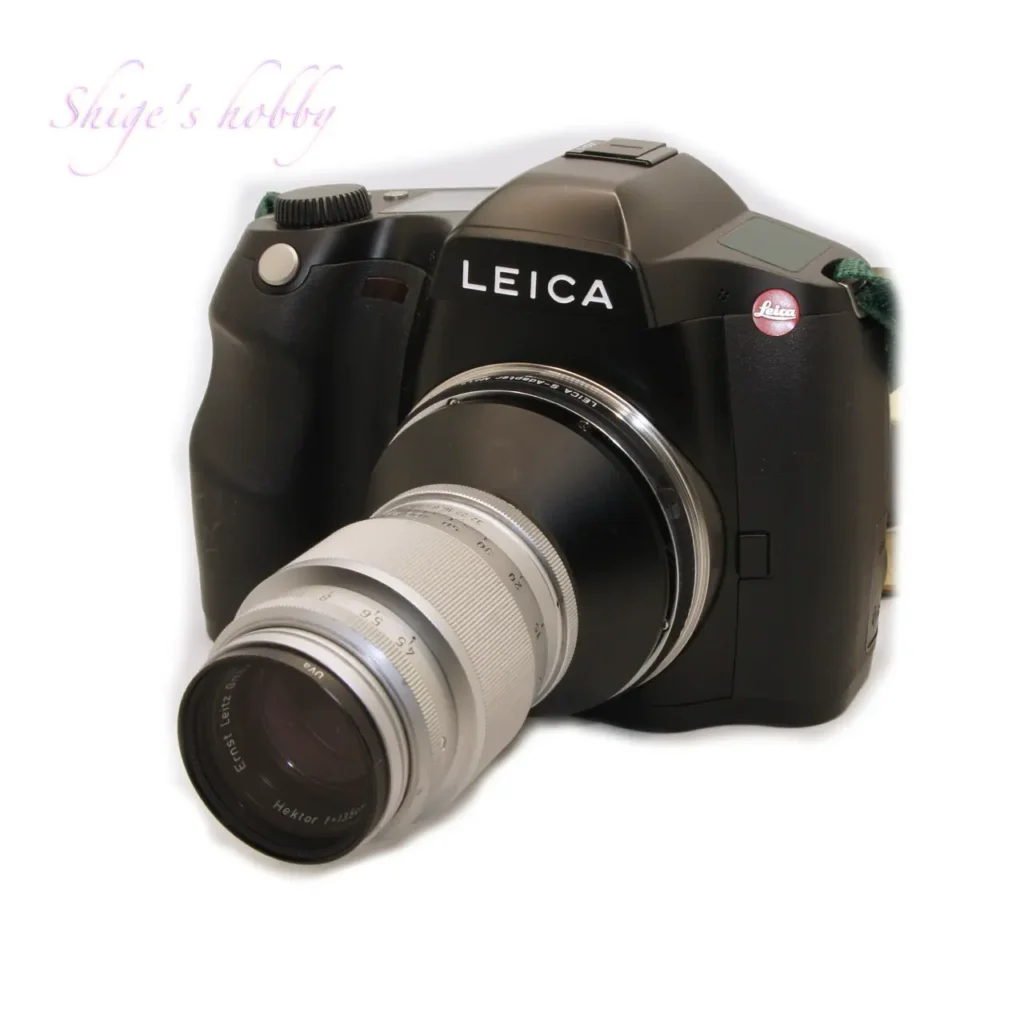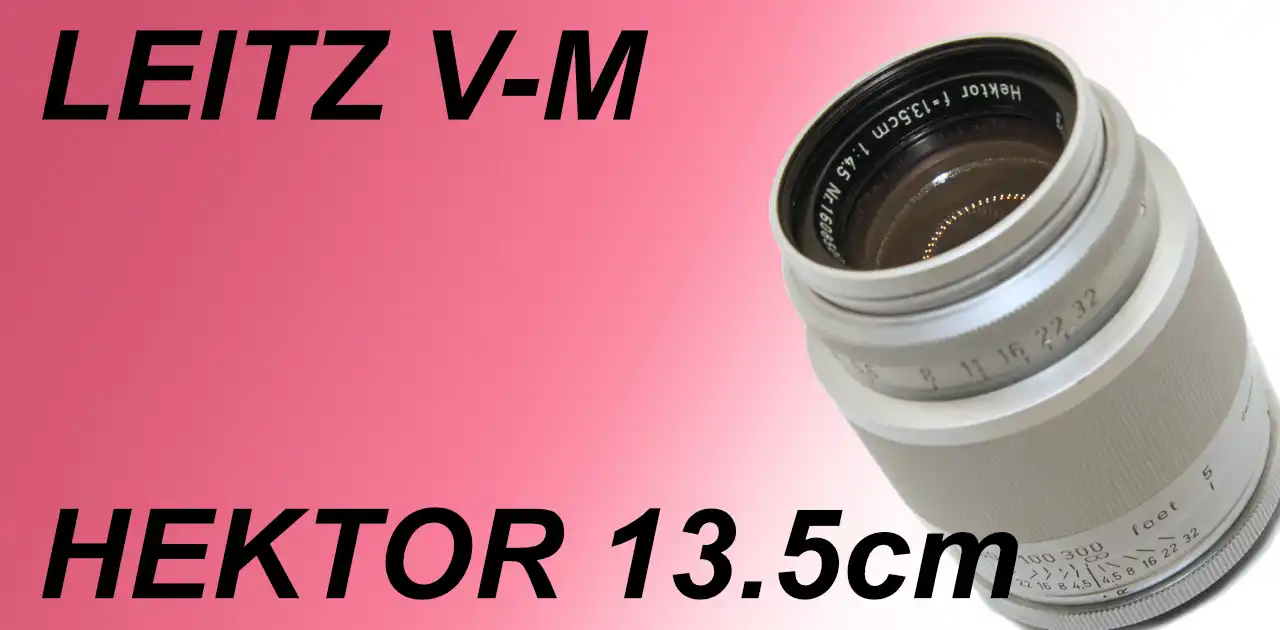A review and sample photos of the LEITZ HEKTOR 135mm F4.5 lens used with a digital SLR camera and the medium-format digital mirrorless camera HASSELBLAD X2D-100C.
- Please see the disclaimer regarding advertising here.
- Italicized links in the text are advertisement links that take you to other sites.
Table of contents
Gallery
The following cameras were used to take the sample photos:
- LEICA S typ007
- CANON EOS 1Ds Mk-III
- LEICA M9
- HASSELBLAD X2D-100C
- Click on the photo to enlarge
Review


1.Overview
The HEKTOR M 13.5cm f/4.5 is a telephoto lens for the Leica M mount, released in 1933.
Key specifications are listed below, with details in the table.
- Aperture: 4.5
- Lens Construction: 3 groups, 4 elements
- Aperture Blades: 15
- Minimum Focus: 1.5m (Some older lenses do not support rangefinders)
- Rangefinder Coupling for Leica M Rangefinder Cameras: 1.5m
- 39mm Filter
- Lens Colors: Black & Silver
2.Usability
The HEKTOR M 13.5cm F4.5 is an M-mount lens, but because the 135mm focal length lens makes it difficult to focus on the desired position using the double image overlap on Leica M rangefinder cameras, I converted the mount to the VISOFLEX-L39 and used it with an SLR camera. In the 2020s, mirrorless cameras equipped with high-performance electronic viewfinders made it possible to comfortably use the M-mount.
This short ZOOAN helicoid is an item that occasionally appears in second-hand stores, and all can be purchased used for around 10,000 yen. However, because it is an old lens, care must be taken to check the helicoid’s extension. We have seen some with the grease removed and the helicoid loose, so we recommend checking the actual item before purchasing. A helicoid with the correct grease allows for smooth extension.
Below are the results of photos taken with a digital SLR camera and a mirrorless camera.
LEICA S typ007
The sample photos taken with the HEKTOR M 13.5cm F4.5 were taken using a Leica S-mount LEICA S Typ007 digital SLR camera. Because the VISO-L39 mount has a long flange focal distance of 91mm, it can be used with most SLR cameras with a mount adapter.
The LEICA S Typ007 was mounted via the lens body + dedicated short helicoid (14071) + VISOFLEX-L39 to MAMIYA645 + MAMIYA645 to LEICA S adapter.
When using the HEKTOR M 13.5cm F4.5 with the LEICA S Typ007, the sensor size is larger than 35mm film format, so the 35mm equivalent is 108mm, which is 0.8 times 135mm.
It also fully covers the 45 x 30mm image sensor size used in the LEICA S typ007, providing a truly expansive image circle that was said to cover 645 film format in the film era.
With an aperture setting of 4, darkness isn’t particularly noticeable when viewed through an SLR viewfinder, and it’s not as sensitive to focus as the faster Elmarit 135 f/2.8, so if you can tolerate f/4.5, you’ll enjoy sharp resolution that’s still relevant in the digital age.
The sample photos were taken at full aperture, and as described below, there are no issues with the image circle even when used with a medium-format digital sensor. The foreground and background bokeh is smooth and not noisy, and the transition from the sharp focus point is excellent. The bokeh shape is slightly out of circularity and has a rugby ball shape, but it’s not unsightly. While color reproduction can change dramatically with digital camera adjustments, you can achieve flawless images by developing directly with the correct exposure.
There is no quirk in either the front or back bokeh, and there is no strange, swirling bokeh. Even at F4.5, it is possible to shoot with a soft focus and emphasize the in-focus area.

CANON EOS 1Ds Mk-III & LEICA M9
Both of the above cameras are digital cameras equipped with 35mm full-frame sensors; the CANON EOS 1Ds Mk-III is a digital SLR camera, while the LEICA M9 is a digital rangefinder camera, but I used them as SLR cameras using the VISOFLEX 3 type.
This lens covers the image circle of the LEICA S typ007, which has a larger sensor size, so images taken with a camera equipped with a 35mm full-frame sensor use the best image quality in the center of the lens, resulting in a consistent appearance of the captured image.
HASSELBLAD X2D-100C
To shoot the example photos with the HEKTOR M 13.5cm f/4.5, I used a mirrorless camera, the HASSELBLAD X2D-100C, which is equipped with a medium-format digital sensor. Because mirrorless cameras have a short flange focal distance, this lens can also be used with the M mount.
In this case, to use it with a LEICA S typ007, I connected the lens to the HASSELBLAD X2D-100C using the VISOFLEX-L39 mount. The camera was connected via the lens body + dedicated short helicoid (ZOOAN) + VISOFLEX-L39 to VISOFLEX-M + VISOFLEX-M to LEICA R + LEICA R to HASSELBLAD X adapter.
When using the HEKTOR M 13.5cm f/4.5 with the HASSELBLAD X2D-100C, the sensor size is larger than 35mm film, so the 35mm equivalent is 108mm, which is 0.8 times 135mm.
It also completely covers the 44 x 33mm image sensor size of the HASSELBLAD X2D-100C, providing a real sense of the wide image circle that was said to cover 645 film format in the film era.
Since the HASSELBLAD X2D-100C does not have a shutter mechanism built into the body, an electronic shutter is required when using the HEKTOR M 13.5cm F4.5. Electronic shutters are more likely to cause rolling distortion when photographing moving subjects. Fujifilm’s GFX series medium format digital mirrorless cameras have built-in shutters, so there’s no risk of rolling distortion, making the Fujifilm GFX more convenient for photographing moving subjects.
3.Summary
In conclusion, to summarize the HEKTOR 13.5cm F4.5 is the oldest 135mm lens that can be converted to the VISOFLEX-L39 mount.
Compared to the newer ELMAR 135mm F4, which is compatible with the VISOFLEX-L39, it has fewer lens elements and is therefore likely to have inferior aberration correction, so in a strict comparison, the image quality is likely to be inferior. In actual field situations, there shouldn’t be a significant difference, so which one to use is a matter of personal preference.
The short helicoid used to convert to the VISOFLEX-L39 is (ZOOAN). Note that the (14071) for the ELMAR 135mm F4 cannot be connected.
Specifications, considerations, etc.
In addition to the four lenses below, other Leica M-mount lenses with a focal length of 135mm include the Elmarit-M 135mm f/2.8 (1962) and the Apothelit-M 135mm f/3.4 (1998).
With the exception of the latest Apothelit, all of these lenses are sold at reasonable prices.
135mm lenses can be difficult to use with rangefinder cameras due to issues with focusing accuracy, but with mirrorless cameras, accurate focusing is possible using the electronic viewfinder, so if you come across one of these lenses at a reasonable price, it might be worth trying it out.
In order to use a lens at infinity, the camera’s flange focal length is important, and the flange focal lengths for Leica mounts are listed below.
| Mount name | Frange back size | note |
| L mount | 20mm | For digital mirror less camera |
| M mount | 27.8mm | |
| L39 mount | 28.8mm | The L/M mount adapter is 1mm thick. |
| R mount | 47.4mm | R-M mount adapters are provided by various companies. |
| S mount | 53.3mm | Since I can’t find an official value for the flange back, I’ll write the value by subtracting the thickness of the S-C645 adapter, 10.7mm, from the CONTAX 645 mount’s 64mm. |
| VISO-M | 68.8mm | If you use 14127, it becomes R mount. |
| VISO-L39 | 91.1mm | If you use OUBIO/16466, it will be a VISO-M mount. |
There is no difference in performance between the focal lengths of 135mm and 13.5cm; it is just a difference in notation.
| Item | Tele Elmar | Elmar | Hektor | Elmar |
| focal length | 135(mm) | 135(mm) | 13.5(cm) | 13.5(cm) |
| Maximum aperture | 4 | 4 | 4.5 | 4.5 |
| Minimum aperture | 22 | 32 | 32 | 32 |
| Lens configuration | 5elements in 3groups | 4elements in 4groups | 4elements in 3groups | 4elements in 3groups |
| Minimum distance(m) | 1.5 (M-mount) | 1.5 (M-mount) | 1.5 (M-mount) | 1.5 (L39-mount) |
| Lens length(mm) | 63.6 (VISOFLEX-M) | 62.5 (VISOFLEX-L39) | 63.6 (VISOFLEX-L39) | 124 (L39) |
| Lens max diameter(mm) | 60 | 52 | 52 | 52 |
| Filter diameter(mm) | 39 | 39 | 39 | A36 |
| Lens Hood | IUFOO 12575 | IUFOO 12575 | IUFOO 12575 | ? |
| Weight(g) | 342 (VISOFLEX-M) | 165 (VISOFLEX-L39) | 247 (VISOFLEX-L39) | 517 (L39) |
| Production Numbers | 28,300- | 25,900- | 108,088 | 5,500- |
| Release date | 1964〜 | 1960-1963 | 1933-1960 | 1931-1937 |
Reference links
- TELE ELMAR 4/135・LEICA Wiki
- ELMAR 135mm F4・LEICA Wiki
- HEKTOR 13.5cm F4.5・LEICA Wiki
- ELMAR 13.5cm F4.5・LEICA Wiki
- LEICA ELMARIT M 135mm F2.8・Shige’s hobby
- LEICA ELMAR M 135mm F4・Shige’s hobby
- LEICA TELE ELMAR 135mm F4・Shige’s hobby
Affiliate links
- LEICA lens・Ads by Amazon
- Leica books・Ads by Amazon

Update history
- 2025.11.23



Be First to Comment